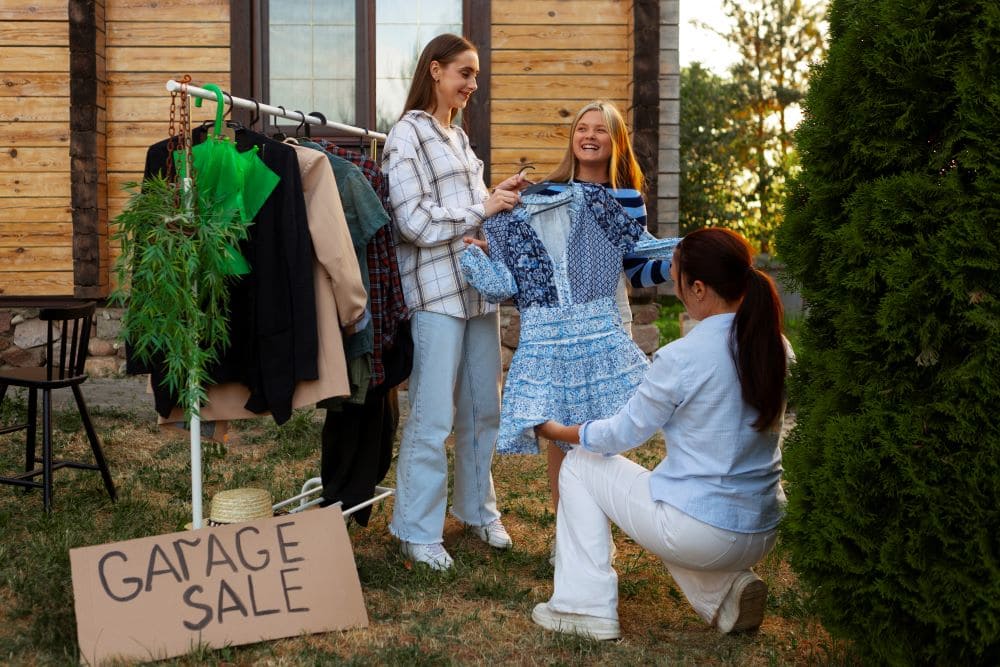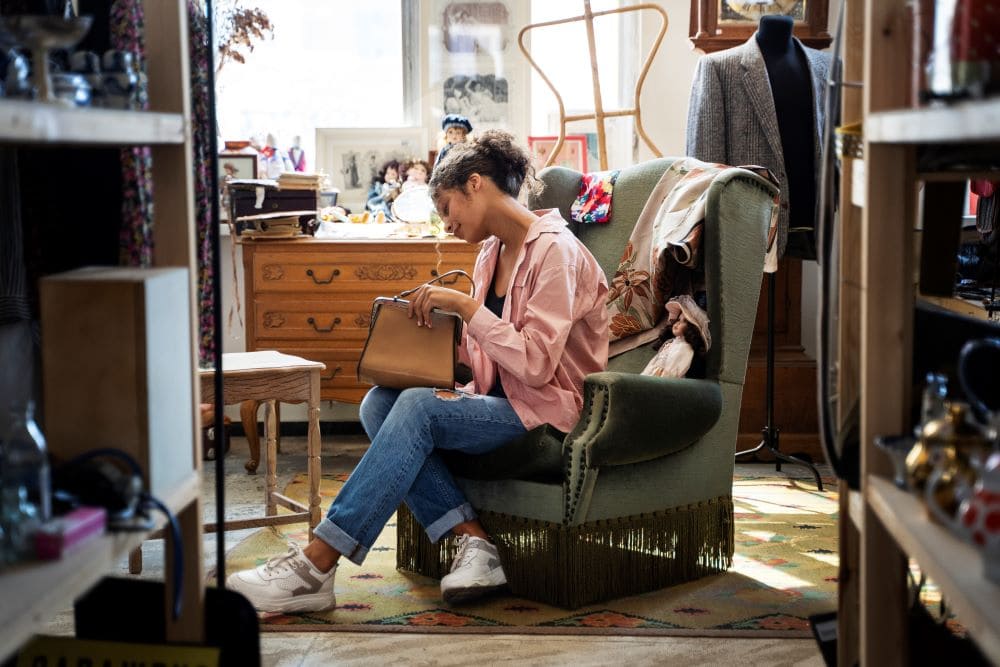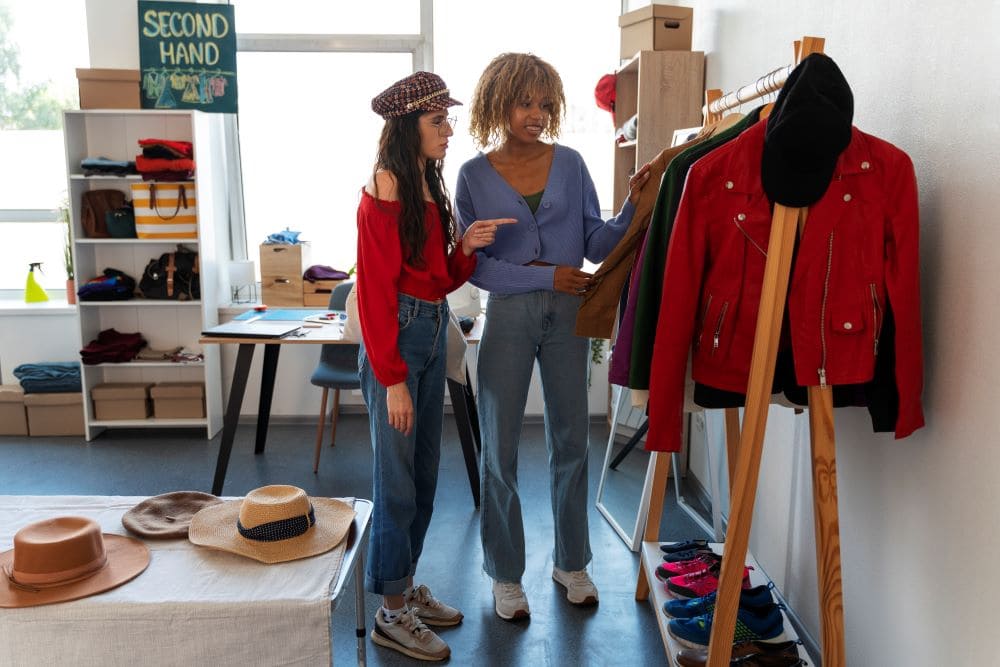
Thrift shopping is experiencing a major renaissance, driven by a mix of social, economic, and environmental factors. Here’s why thrift is thriving in today’s market:
1. Sustainability and Environmental Awareness
- Reducing Waste: As people become more aware of the fashion industry’s impact on the environment, there’s a growing push to reduce waste. Thrift shopping helps by extending the life of clothes, reducing the need for new production, and ultimately keeping garments out of landfills.
- Eco-Conscious Consumers: Younger generations, particularly Millennials and Gen Z, are increasingly eco-conscious. They prioritize sustainable shopping and see thrift as an ethical choice that aligns with their values.
2. Affordability and Economic Appeal
- Cost-Effectiveness: Thrift stores offer quality items at a fraction of the original price, making it a practical choice for budget-conscious shoppers, especially in uncertain economic times.
- Unique, High-Quality Finds: Many thrift stores carry well-made, durable clothing and even designer brands, allowing shoppers to access quality pieces they might not be able to afford otherwise.
3. Desire for Individuality and Unique Style
- One-of-a-Kind Pieces: Thrift shopping offers access to unique, vintage, or limited-edition items that aren’t available in mainstream retail. This allows shoppers to cultivate a distinctive style that stands out from mass-produced fashion.
- Creative Expression: Thrifting encourages creative expression by offering a diverse range of styles, cuts, and eras that people can mix and match. It’s also a popular resource for DIY fashion, where shoppers can repurpose or alter items to make them their own.
4. The Influence of Social Media and Celebrity Endorsement
- Thrift Hauls and Influencers: Platforms like Instagram, TikTok, and YouTube have popularized thrift shopping with “thrift hauls” and styling videos. Influencers showcase how they find trendy, affordable pieces, making thrift appealing and accessible.
- Celebrities Embracing Vintage: Many celebrities and public figures have been spotted in secondhand and vintage clothing, which has contributed to destigmatizing thrift. When well-known figures celebrate thrift, it sends the message that used clothing can be stylish and aspirational.
5. Rise of Online Thrift Platforms
- Convenient Access: Online thrift platforms like ThredUp, Depop, and Poshmark make secondhand shopping easy and accessible to anyone with internet access, expanding the market beyond physical stores.
- Curated Shopping Experience: These platforms often provide a curated experience, allowing shoppers to browse by brand, size, and style, which can make finding desirable pieces easier compared to digging through racks in a physical store.
6. Circular Economy and Conscious Consumption
- Shifting Attitudes Toward Ownership: Many consumers are moving toward a “circular” mindset, where items are meant to be reused and recycled rather than discarded. Thrift shopping is a natural fit for this shift, as it involves buying and selling within a closed loop.
- Quality over Quantity: This trend also aligns with the movement toward mindful consumption. Instead of buying numerous fast-fashion pieces, shoppers are opting for fewer, high-quality thrifted items that can last longer.
7. Resale Value and Investment Potential
- Resale as a Smart Financial Choice: Shoppers are recognizing that high-quality thrift items can often retain or increase in value, particularly if they’re well-maintained. Vintage and designer items, in particular, are seen as investments that can later be resold, contributing to a “buy-sell” cycle.
- Support for Resale Entrepreneurs: Many people are also turning thrift into a business, sourcing items from thrift stores to resell on online platforms. This resale economy has created an entire ecosystem around secondhand fashion that reinforces its value.
8. Thrift as a Social and Cultural Experience
- Community Events and Pop-Up Thrift: Thrift shopping is becoming more than a retail experience; it’s a social activity. Community events like flea markets, thrift pop-ups, and sustainable fashion fairs create spaces for people to engage with others who share an appreciation for secondhand fashion.
- Local Thrift Culture: Thrift shops are often integral to local communities, with many supporting charities or specific causes. Shopping at a thrift store can create a sense of community engagement and social responsibility, making it a meaningful experience beyond simply buying clothes.
Thrift is thriving as a result of these combined forces, representing a shift in how people view clothing, consumption, and sustainability. This vibrant, multifaceted movement shows no signs of slowing down, making thrift shopping an enduring and powerful component of the modern fashion industry.


